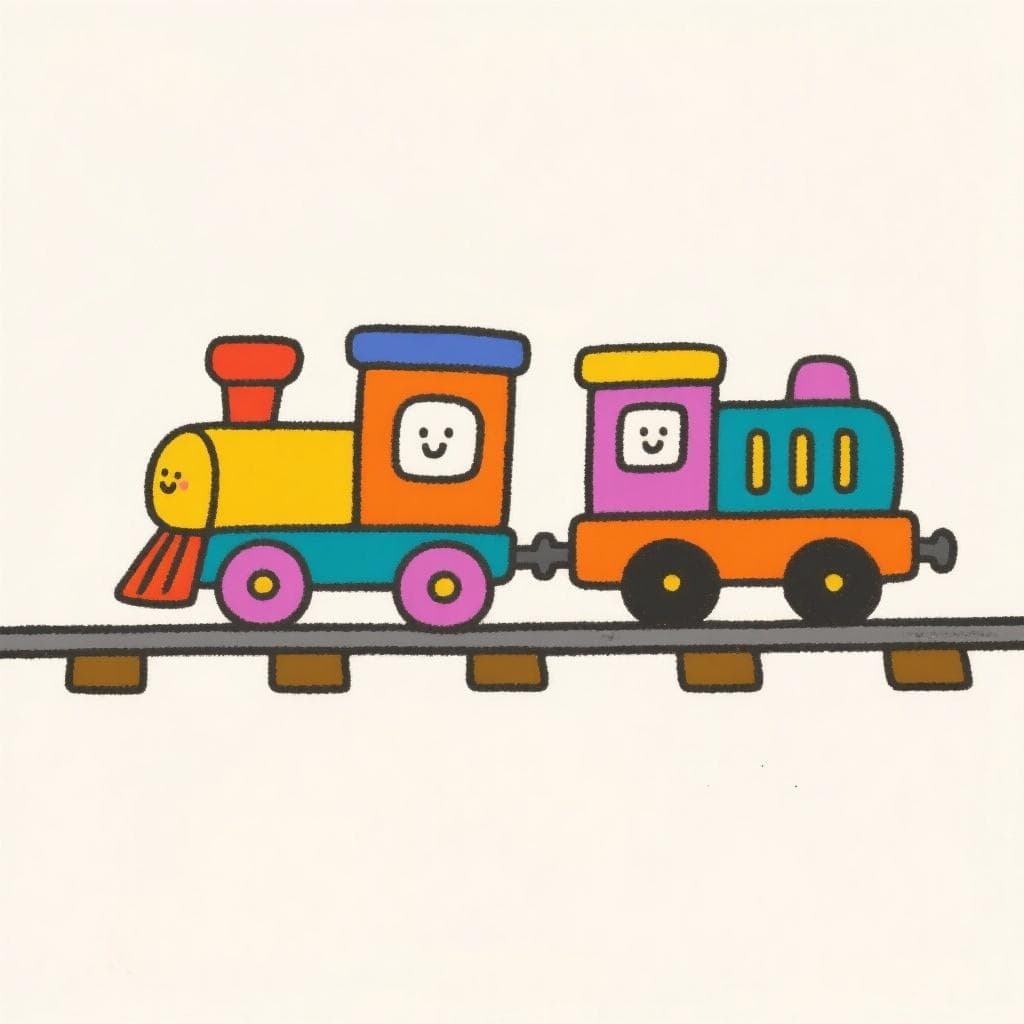Un tren tras otro tren.
un TREN TRAS O-tro TREN
One train after another train.
🔊 Listen & Practice
Start with slow speed to master pronunciation, then gradually increase to challenge yourself.
🎨 Visualization

Un tren tras otro tren. Keep the trains moving smoothly!
🎯 Pronunciation Focus
The 'tr' Consonant Cluster
/tɾ/This is the main event! The goal is to move instantly from the crisp 't' sound to a quick, tapped 'r'. Your tongue starts behind your teeth for the 't' and then immediately taps the roof of your mouth for the 'r'.
The Soft 'r' (vibrante simple)
/ɾ/The 'r' in 'tren' and 'tras' is a single, quick tap of the tongue against the roof of your mouth. Think of it like a very fast English 'd' sound in the word 'ladder'. It's light and bouncy.
📝 Practice Breakdown
Start here. Focus on making the 'tr' sound sharp and clean. Your tongue should make a quick tap for the 'r' right after the 't'.
Now for the second half. The challenge is to make the 'tr' in 'tras' and 'tren' sound exactly the same. Link 'tras' and 'otro' together so they flow.
Key Words in This Tongue Twister:
📚 Background
This short phrase is a fundamental 'trabalenguas' for anyone learning Spanish. Because it's simple and repetitive, it's the perfect workout for your mouth muscles to master the tricky 'tr' sound, a cornerstone of Spanish pronunciation.
❌ Common Pitfalls
Using the English 'r'
Mistake: "Pronouncing 'tren' to sound like the English word 'train'. The English 'r' is made further back in the mouth and is much heavier."
Correction: Forget the English 'r'. For the Spanish 'r' in 'tren', the tip of your tongue needs to physically tap the roof of your mouth, just behind your top teeth. It's a quick, physical action.
Adding an Extra Vowel
Mistake: "Accidentally saying 'tuh-ren' or 'tuh-ras', putting a small vowel sound between the 't' and the 'r'."
Correction: The 't' and 'r' sounds should be smashed together. There's no space for air or another vowel. Practice saying 't-r-t-r-t-r' to get the feel of the rapid transition.
🌎 Where It's Used
General Spanish
This is a universal pronunciation drill used by learners and native speakers across the entire Spanish-speaking world.
🔗 Related Tongue Twisters
The Train Conductor Challenge
Say it five times in a row, like a train chugging along ('ch-ch-ch...'). Try to get a little faster each time without letting your tongue derail!
🏷️ Tags
Frequently Asked Questions
Why is the Spanish 'tr' sound so difficult for English speakers?
It's all about the 'r'! The English 'r' sound doesn't involve tapping the tongue, while the Spanish 'r' does. Your mouth has to learn a brand new, very quick movement and combine it with the familiar 't' sound. It just takes a little practice to build that muscle memory.
Is this a real sentence people actually say?
Not in conversation, no. This is a 'trabalenguas' (literally 'tongue-locker' or tongue twister). Its only purpose is to be a fun and effective exercise to help you perfect a specific sound.



